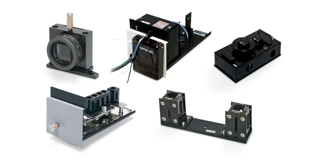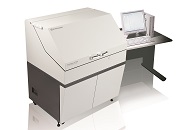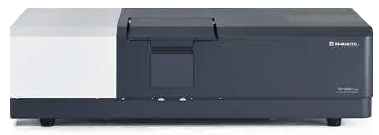Since light cannot penetrate opaque (solid) samples, it is reflected on the surface of the samples.
UV accessory selection guide for solids - Options
Related information
-
-
With relative specular reflectance measurement, the reflectance is calculated from the strength ratio after comparing the light reflected from the reference sample with the light reflected from the measurement sample.
-
With absolute specular reflectance measurement, as shown in the figure, a reference sample is not used, the sample-free state (air) is set at 100%, and the reflection of the sample is simply applied to the 100% setting when measuring the sample.
-
The transmittance of thin samples such as film with little scattering can be measured by combining the film holder with the standard sample compartment.
-
This large-sample compartment enables transmission and reflection measurements of various-shaped samples.
-
This unit uses a lens and mask to mask the beam that passes through the integrating sphere opening.
-
This software calculates the color values of the measured object from the spectra obtained by the spectrophotometer.
-
This software calculates film thickness from the peak positions of the interference pattern caused by the film.
-
The SolidSpec-3700i/3700i DUV have three detectors which cover the range from ultraviolet to near-infrared. This product is equipped with LabSolutions UV-Vis software.
-
UV-3600i Plus, the Multi-purpose large-sample compartment and the Integrating sphere attachment also feature three detector, enabling the high-sensitivity measurement of solid samples. This product is equipped with LabSolutions UV-Vis software.












